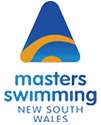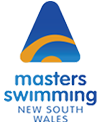FREESTYLE BASICS
©Bill Moorcroft Swimming
- STREAMLINE your body to minimise drag
- ARM is extended forward from the shoulder, ELBOW HIGHER than hand
- BODY ROLL from WAIST through full body axis (approx. 45 degrees)
- SMOOTH hand entry – fingers enter (thumb down) then the hand extends forward as far as possible, pushing the shoulder forward for maximum extension.
- Swim with both hands in the front quadran Delay Grab Hand pulling back until just before recovery hand arrives to extend forward and streamline.
- Grab (water) hand become PULL HAND and pull back, then sweeps down while elbow is maintained in a HIGH stable position.
- From deepest point the PULL HAND sweeps inward and upwa
- At mid-stroke accelerate the PULL HAND backward and outward
- A finishing upsweep of the PULL HAND past the HIP breaks the water
- FEEL “pressure” on the pull hand at all times
- As trunk rotates from waist HIGH RECOVERY ELBOW lifts pull hand out of wate (Action is same as: Pull hand out of back pocket)
- Pull hand changes to recovery phase: with body rotation, hand advances forward to swim in front quadrant. At all times hand is below elbow.
- Regardless of kicking tempo, a DOWNBEAT of the RIGHT LEG will coincide with finishing movement of the RIGHT ARMSTROKE (similarly on left side)
- Turning head to BREATHE is performed with NATURAL ROLL of trunk
- Breath flows out firmly but gently and is NOT BLOWN OUT
- Keep toes pointed; bend knee on downbeat; retain ankle flexibility
REMEMBER:
- FREESTYLE is a form of CATCH-UP – right arm – kick kick – left arm – kick kick
- DELAY pulling back to allow recovery hand to arrive with both hands in the front quadrant
- FINGERS should be held loosely together to create a paddle – not with excessively cupped hands.
- HAND ENTRY in line with shoulder – don’t let hand cross centre line of body
- WINDSCREEN WIPER trunk rotation to left, then right. Pass through the middle – don’t hold chest flat in the water
- MAINTAIN RHYTHM, bodyroll, length of stroke when attempting to increase speed – aggressive catch and pull will increase propulsion
- INCREASE BODYROLL to allow enough time for full breath – don’t turn to breathe too late
- DON’T LIFT HEAD to breathe – keep head on side and increase body roll to allow enough time for full breath
- LOSS OF PROPULSION will result from a dropped elbow and inadequate body roll
- USE ARMS to deliver power developed with body roll
FRONT QUADRANT SWIMMING – Be aware of where your hands “pass” each other as your recovering hand is moving forward to enter the water and your pulling hand is moving in the opposite direction.
Your “Passing Zone” should be at, or forward of, your head!!
Backstroke Basics
©Bill Moorcroft Swimming
- EXPLODE off the wall, streamline needle shaped, dolphin kick to surface
- HEAD BACK, hand on hand – hand on top (palm up) is first stroke
- FULL AXIS BODY ROLL to maximum extension
- Initiate body rotation from HIPS
- Head remains STILL and BACK – hair line/water line
- POP shoulder on EACH body roll
- As your left arm passes the shoulder in the STROKE, your right arm passes its shoulder in RECOVE
- As your left arm approaches the finish of the STROKE, your right arm is preparing to ENTER the
- Pull with BENT ELBOW to gain maximum propulsion
- FULL ARMSTROKE past hip with flip hand palm down to end stroke
- KICK WITH BODY ROLL: kick right; kick left
- Recover armstroke THUMB UP till upright (12 o’clock)
- Twist arm from 12 o’clock so that LITTLE FINGER enters water first
- Arms are always 180-degrees from each
- Focus on rhythm, body roll, length of stroke – aggressive catch and pull
REMEMBER:
- Full Axis Body Roll rotating from HIPS
- POP shoulder on EACH body roll
- Focus on Rhythm
- Aggressive CATCH and PULL
Butterfly Basics
©Bill Moorcroft Swimming
- Two kicks for every pull
- Hips go UP as the hands go IN
- Kick + KICK + Glide + Pull
- Kick hands INTO the water – Kick hands OUT of water (as you end the pull stroke)
- Keep ELBOWS HIGH and ABOVE WRISTS
- Breathe every OTHER stroke
- When breathing lift head FORWARD, push chin forward
- Hands enter directly IN FRONT of shoulders
- Arms streamlined on entry – ride out the stroke
- Keyhole pull – create a triangle or diamond effect
- Accelerate through end of stroke
- Relaxed almost straight-arm recovery
- Head comes out before arms come out
- Head goes in before arms go in
- Timing is critical to a smooth rhythm, emphasise SECOND kick
- Kick from the chest down. The kick in butterfly should not originate from the knees or be limited to the lower legs.
- Trying to picture yourself kicking from the chest down is another way to focus on body balance
REMEMBER CO-ORDINATION
- TWO dolphin kicks to each arm cycle
- FIRST downbeat kick as the hands enter and begin the catch
- SECOND downbeat kick at the end of the push phase
- Entire stroke underwater resembles a figure ‘S’ and should be successive and continuous
Breaststroke Basics
©Bill Moorcroft Swimming
ARMSTROKE
- From streamlined position hands move outward (palms out and downward)
- slightly wider than, but always forward of, shoulders
- Elbows begin to flex, forearm/ hand sweeps downwards
- Hands at widest point, shoulders begin to lift
- Hands scull inward and upward, head and shoulders lift
- As shoulders lift to highest point; hands begin to move forward (close to surface).
- Heels are at surface, knees bent, feet begin to turn outward
- Arms extend forward. Ankles dorsi-flexed and knee/hip extension drives feet backwards while rotating inward
- Hips extend and feet continue to rotate backward and inward
- Head tilts downward and hips lift as body returns to streamlined position
KICKING
- Kick can be 50-80% of propulsive force
- Heels begin to draw up towards buttocks, (do not drop knees) toes turned inwards, knees no wider than shoulders
- Closest to buttocks, feet begin to flex sideways, then become fully flexed
- Feet wider than knees, begin propulsive drive outwards, backwards
- Midway through propulsive phase, feet at widest point
- Legs begin squeeze inwards as straighten
- Cycle completes with feet closed, pointed, streamlined
BREATHING
- Breathing – Slight forward extension of neck as out sweep of arms nearly completed
- Face breaks surface of water during in sweep, breath taken before head lowered again
- Breathing – One breath per cycle, as hands and elbows sweep in, trunk rises,
- breath taken from when mouth clears until trunk begins to lowe
REMEMBER
- PULL – Begin by turning thumbs down – increased reach, chest drop and hip rise
- KICK – Lift feet to bum (don’t drop knees). Toes turn out as feet go up
- TIMING – Lift feet as you in- Kick as arms reach extension.
- Tempo of in-scull and kick stays constant (explosive!).
- To change pace, increase or decrease length of glide (extension held).

